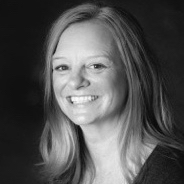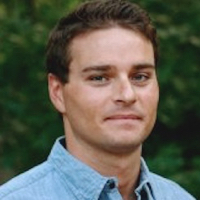Rascals case in brief
In the beginning, in 1989, more than 90 children at the Little Rascals Day Care Center in Edenton, North Carolina, accused a total of 20 adults with 429 instances of sexual abuse over a three-year period. It may have all begun with one parent’s complaint about punishment given her child.
Among the alleged perpetrators: the sheriff and mayor. But prosecutors would charge only Robin Byrum, Darlene Harris, Elizabeth “Betsy” Kelly, Robert “Bob” Kelly, Willard Scott Privott, Shelley Stone and Dawn Wilson – the Edenton 7.
Along with sodomy and beatings, allegations included a baby killed with a handgun, a child being hung upside down from a tree and being set on fire and countless other fantastic incidents involving spaceships, hot air balloons, pirate ships and trained sharks.
By the time prosecutors dropped the last charges in 1997, Little Rascals had become North Carolina’s longest and most costly criminal trial. Prosecutors kept defendants jailed in hopes at least one would turn against their supposed co-conspirators. Remarkably, none did. Another shameful record: Five defendants had to wait longer to face their accusers in court than anyone else in North Carolina history.
Between 1991 and 1997, Ofra Bikel produced three extraordinary episodes on the Little Rascals case for the PBS series “Frontline.” Although “Innocence Lost” did not deter prosecutors, it exposed their tactics and fostered nationwide skepticism and dismay.
With each passing year, the absurdity of the Little Rascals charges has become more obvious. But no admission of error has ever come from prosecutors, police, interviewers or parents. This site is devoted to the issues raised by this case.
On Facebook
Click for earlier Facebook posts archived on this site
Click to go to
Today’s random selection from the Little Rascals Day Care archives….
Click for earlier Facebook posts archived on this site
Click to go to
Today’s random selection from the Little Rascals Day Care archives….
Embarrassed prosecutors, where are you?

theintercept.com
Jordan Smith
April 16, 2016
“To many in the criminal justice system, it is now a source of embarrassment that there was ever a time when police and prosecutors were convinced that bands of Satanists had infiltrated the nation’s day care centers in order to abuse young children. Yet in the (Fran and Dan Keller case), which I investigated for the Austin Chronicle back in 2009, I was startled to hear both a veteran cop and a prosecutor say they still believed in even the most absurd of the children’s allegations….
– From “Convicted of a Crime That Never Happened: Why Won’t Texas Exonerate Fran and Dan Keller?” by Jordan Smith at the Intercept (April 8)
![]()
MPD renamed DID – but it’s still bunk
May 31, 2013
“After the DSM-III, often called the ‘Bible’ of psychiatric diagnosis, included (Multiple Personality Disorder) in 1980, thousands of spurious cases emerged in the next two decades, and special psychiatric clinics arose to treat them. Yet faced with evidence of this disastrous epidemic, the DSM-IV did not delete the diagnosis. Instead, the manual renamed it Dissociative Identity Disorder.
“ ‘MPD presented a dilemma for me,’ says (psychiatrist Allen Frances, who oversaw DSM-IV). ‘We took scrupulous pains to present both sides of the controversy as fairly and effectively as possible – even though I believed one side was complete bunk.’ How do you ‘fairly’ argue for a diagnosis you think is complete bunk? Where’s the methodological rigor? Why did it take malpractice suits to close the psychiatric MPD clinics and not the presumed voice of scientific authority, the DSM? Dissociative Identity Disorder remains in the DSM-5.”
– From “How Psychiatry Went Crazy” by Carol Tavris in the Wall Street Journal (May 17, 2013)
“Another disturbing by-product of the MPD diagnosis is the prevalence of alleged repressed memories of satanic ritual abuse. The association of satanic ritual abuse in MPD diagnoses has been attributed to the belief by numerous MPD adherents in the existence of an intergenerational satanic cult conspiracy that has murdered thousands without leaving a trace of evidence.”
– From “Repressed Memory, Multiple Personality Disorder and Satanic Ritual Abuse,” an amicus brief filed in Supreme Court of Georgia, Kahout v. Charter Peachford Behavioral Health System (September 1998)
Beware the next generation of Indian captivity tales
Aug. 20, 2012
Endlessly fascinating – and baffling – is how some experts fell headlong for “satanic ritual abuse,” while others managed to keep their wits. This is from an April 25, 1989, Associated Press story:
“David G. Bromley, a sociologist at Virginia Commonwealth University in Richmond, Va., sees not an increase in satanic crime, but a ‘cult scare’ that has more to do with urban legends and modern psychology than with criminology.
“‘I think it’s all a hoax,’ says Bromley, who investigated allegations of cult ‘brainwashing’ in the 1970s that were never proven.
“Bromley says rumors about rings of adults who start day care centers to find children to abuse in satanic rituals are ‘sheer fantasy’ – but fantasy fed by reports of real child abuse and by today’s parents’ guilt and fears of entrusting their children to strangers.
“‘It is not coincidental that allegations of satanic conspiracies are centered on day care centers,’ he says.”
April 25, 1989! Bob Kelly was attending his probable cause hearing. The first McMartin trial was still ongoing. Stephen Ceci and Maggie Bruck were six years from publishing their landmark “Jeopardy in the Courtroom: A Scientific Analysis of Children’s Testimony.” So how was David Bromley able to see through the fog?
“This kind of ‘subversion episode’ is not new,” he told me recently. “There has been one every few decades in American history. The focus has changed but not the phenomenon. Indian captivity tales, Salem witch trials, drug scares, communist scares, immigrant scares, UFO scares.
“There has always been some group or coalition that has found social insecurities a way of advancing its own status. In this case police and therapists made careers out of the episode.
“The story was only plausible for a limited period, and these kinds of events tend to implode eventually. But there are a lot of casualties in the meantime.
“It will happen again, I am sorry to say.”
And when it does…?
Letters claiming wrongful conviction couldn’t be true – could they?

linkedin.com
Benjamin Rachlin
Feb. 22, 2017
“[When Rich Rosen, Theresa Newman and Jim Coleman began planning the state’s first innocence project], not everyone agreed their work was worth doing. To many… colleagues, in North Carolina and across the country, the letters they were reading were no more than acts of desperation: There was zero chance these inmates were innocent, only that they had nothing to lose by filing paperwork. The American criminal-justice system had always trivialized its own chances at convicting anyone wrongly, feeling certain – as lawyer Christine Mumma no longer could – that protections at trial made that outcome impossible….”
– From “A Justice Startup” by Benjamin Rachlin in “Innocent: The Fight Against Wrongful Convictions,” a Time special edition
Rachlin’s piece is excerpted from “Ghost of the Innocent Man: A True Story of Trial and Redemption,” to be published in August.
![]()











0 CommentsComment on Facebook